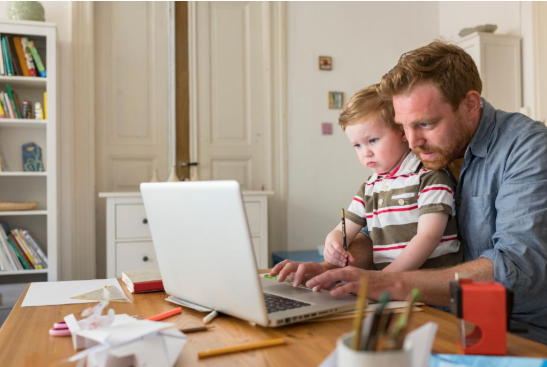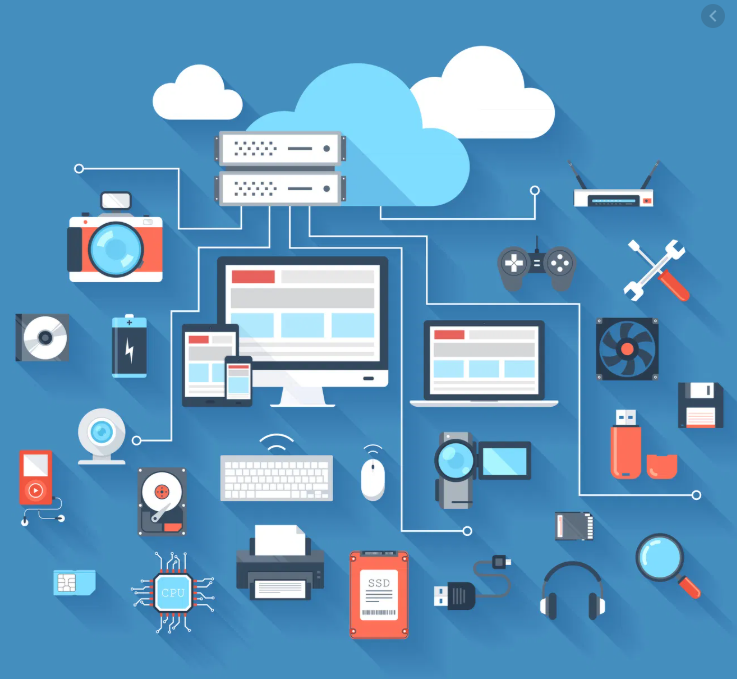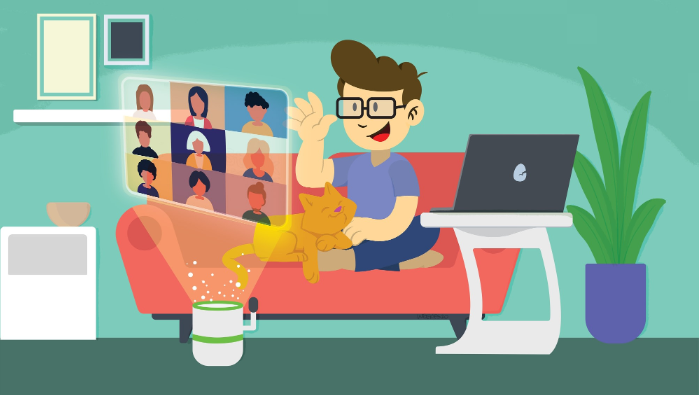For many of us, the coronavirus has been the most significant, and perhaps the most traumatic, experience of our lives. It will have a huge impact on us as individuals, as a society and as a workforce. When a major event happens that poses an existential threat, many of the norms of life change, some in the short term and some for the long term. Just as with 9/11, many of the major coronavirus changes that we’re experiencing now will disappear, and things will go back to the way they were without much notice. But the coronavirus will permanently alter many elements of how we work.
Technological Equalizer
The pandemic has been a technological equalizer, where people previously unaccustomed to using tech tools in the workplace have had no choice but to adapt. And in some cases, workers are becoming more efficient. And amid stay-at-home orders across the country, office workers have ditched their daily commutes to work from dining room tables, couches and beds in their own homes. Many may find themselves in this situation for the long haul, as businesses struggle to find a path forward while restrictions slowly lift. Personal interactions have been replaced by virtual meetings and for team members who no longer work together in a central office, phone calls and meetings may move to video. This could help to build trust among workers who can’t interact in person.
When you’re able to pick up on nonverbal cues, or you’re invited into a colleague’s home via video chat, it offers a different type of intimacy, which is formed in a faster way than would happen in a traditional working environment. If there’s one bright spot to how the pandemic will impact the future of work, it’s that it could strengthen the personal relationships we form with colleagues.
However, communication is more challenging when conducted remotely. We are more persuasive in person, and being on a video call is more draining than a face-to-face chat because workers must concentrate harder to process non-verbal cues such as tone of voice and body language. Anxiety about technology is another barrier, and some find lack of eye contact in virtual meetings unnerving.

Technology to the Rescue
School
Technology is coming to the rescue in a major way for workers and school kids whose lives have been disrupted by the Coronavirus. With millions of school-aged children at home various tech applications from Zoom video conferencing to Google Classroom and Google Meet, plus other online Apps, are playing a pivotal role in keeping schools functioning online. Zoom, in response to the widespread recent school closures, is providing free basic accounts for schools in 16 countries. A wide variety of education apps and mobile technology is ensuring millions of pupils are able to remain in direct communication with teachers and access new homework or tasks.
Workplace
Technology has transformed the workplace in the last 20 years. Similar global mass closures just a decade ago would have led to far more severe shutdowns in economic productivity, but today the world is enjoying an unprecedented level of interconnectivity.
Increasingly more workers will be able to perform their duties remotely. The Coronavirus may speed up already rapid changes giving many office workers more flexibility and opportunity to work remotely. Worldwide, there will undoubtedly be fewer people in the office, and now workers have tried working from home, they may find they like it. And organisations may have little choice but to limit the numbers of workers on-site. As companies upgrade their remote links and improve virtual meetings, it is likely such services will remain in place well after this crisis, with far-reaching consequences for work/life balance.

Growth of the Cloud Infrastructure
Cloud and online-based technology ensure that most workers can easily access their office computers remotely – via apps like LogMeIn, Dropbox and many others. The use of cloud technology, means enterprises now require fewer IT staff to be physically present on their premises, as companies increasingly use remote servers and related third-party-provided IT functions.
Cloud infrastructure has spread globally, ensuring that cloud-based software services (SaaS) run by the likes of SAP, Salesforce and Oracle are becoming increasingly accessible, even for many smaller enterprises. The explosion in social media ensures friends, families and work colleagues can remain in touch easily. Key discoveries, projects or challenges are now communicated at an instant globally – often free of charge. It also allows for social distancing without the threat of people feeling completely cutoff. Online deliveries of food (Deliveroo, Costco, Uber Eats) – makes life much easier today during such a pandemic.

As lock-downs are relaxed around the world and people return to their workplaces, the next challenge will be adapting open office spaces to the new normal of strict personal hygiene and physical distancing. New norms of hand sanitizing, cleaning equipment and wearing masks will emerge. Handshaking or friendly pecks on the cheek may soon be things of the past, as will family photos and mementos on desks.

